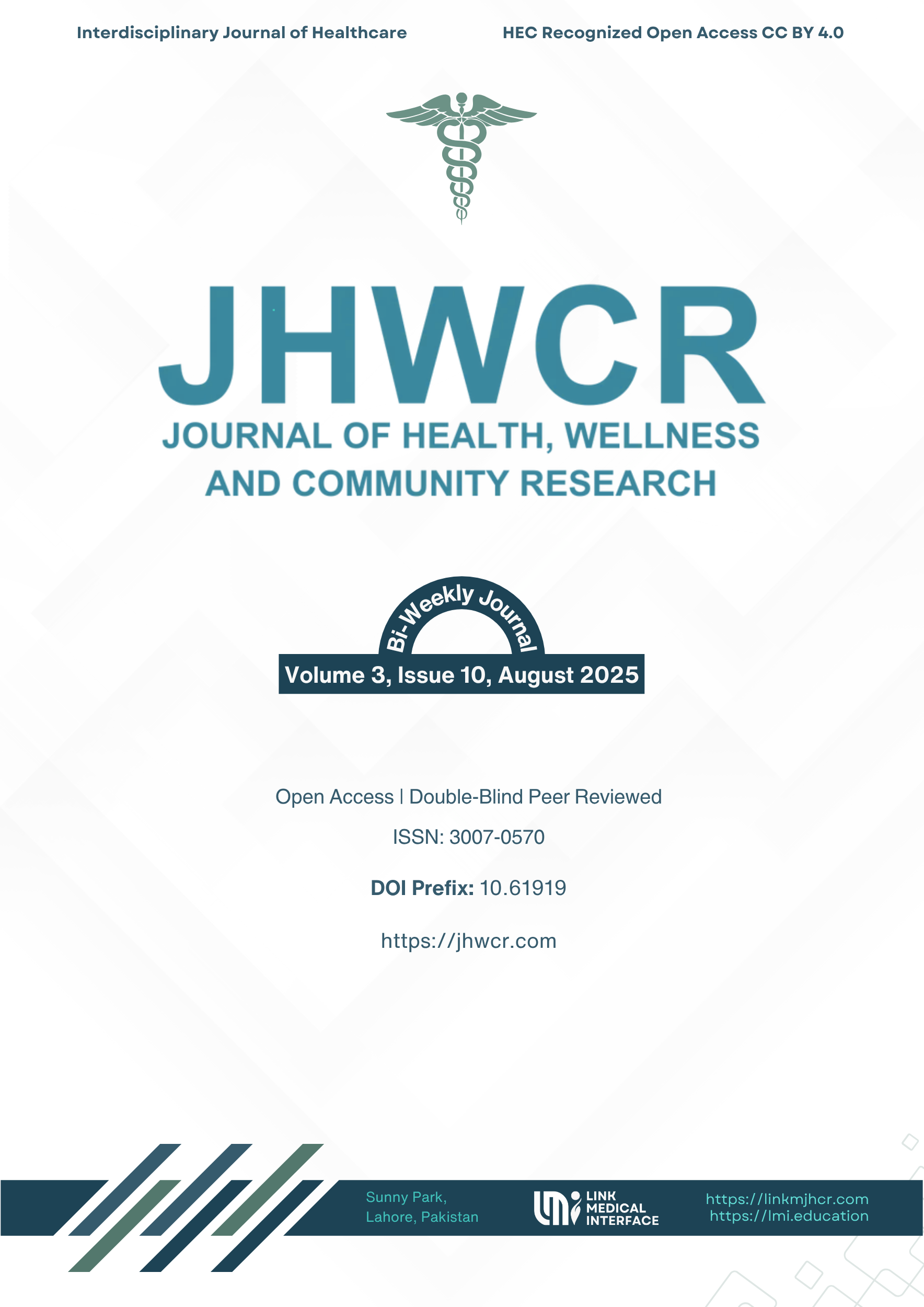Cultural and Socioeconomic Influences on the Uptake of Virtual Reality Rehabilitation for Children with Cerebral Palsy
DOI:
https://doi.org/10.61919/m44gfh62Keywords:
Virtual Reality Therapy; Cerebral Palsy; Cultural Acceptability; Socioeconomic Status; Pediatric Rehabilitation; Digital Health AdoptionAbstract
Background: Cerebral palsy (CP) is the most common motor disability in childhood, with limited access to engaging rehabilitation in low- and middle-income countries (LMICs) such as Pakistan. Virtual reality (VR) offers immersive, interactive therapy with demonstrated benefits for motor function and engagement. However, cultural beliefs and socioeconomic status (SES) can significantly influence caregiver acceptance of such technologies. Evidence on these determinants in Pakistan remains scarce. Objective: To evaluate the cultural and socioeconomic acceptability of VR-based rehabilitation among caregivers of children with CP in Lahore, Pakistan, and to examine the relationship between SES and cultural attitudes toward VR therapy. Methods: A cross-sectional observational study was conducted between June and August 2024 in multiple pediatric rehabilitation centers in Lahore. Primary caregivers of children aged 5–12 years with CP undergoing VR therapy were recruited via purposive sampling. Data were collected using validated tools for SES (Socioeconomic Status Index, SESI) and cultural acceptability (Cultural Acceptability Scale, CAS), alongside measures of trust, comfort, and perceived effectiveness. Associations were tested using chi-square and Fisher’s exact tests, with effect sizes reported. Ethical approval was obtained, and informed consent was secured. Results: Among 171 participants, 70.8% were from middle SES, 21.6% low SES, and 7.6% high SES. Cultural acceptability was moderate in 93.0%, high in 4.1%, and low in 2.9%. Higher education and SES were significantly associated with greater CAS (p < 0.05), with a strong SES–CAS relationship (Cramer’s V = 0.41). High SES caregivers were more likely to recommend VR (72.0%) than middle (60.0%) and low SES (42.5%) counterparts (p = 0.021). Trust in technology, community encouragement, and digital comfort correlated with higher CAS levels (p < 0.05). Conclusion: Acceptance of VR rehabilitation in Lahore is moderate but positively influenced by higher SES, education, and trust in technology. Strategies addressing digital literacy, cultural tailoring, and professional endorsement may enhance adoption, supporting equitable integration of VR into pediatric neurorehabilitation in LMICs.
Downloads
Published
Issue
Section
License
Copyright (c) 2025 Tayyab Ayub, Ayesha Alam, Muhammad Yousaf Sani, Khadija Javed, Sawera Sareer, Dania Tahir (Author)

This work is licensed under a Creative Commons Attribution 4.0 International License.


